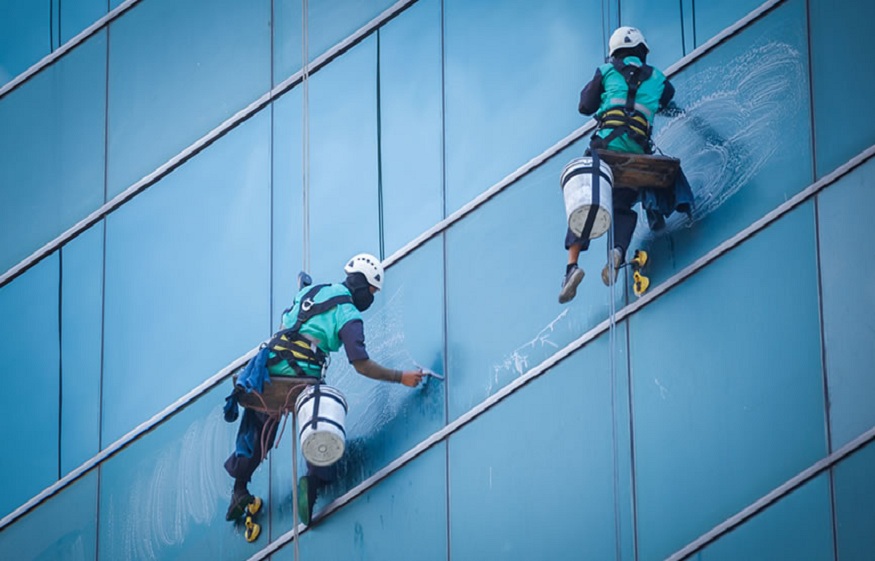Facade cleaning is part of facade maintenance or renovation operations. Subject to all sorts of attacks (pollution, smoke, dust, etc.), the facade can lose its splendor after a few years. In addition to the paint becoming dull, the facade may also have stains that give a less dapper look to the house. A brush stroke may then be necessary to allow the facade to regain its youthful appearance! Unless you are a seasoned handyman, it is better to entrust this type of work to a qualified professional.
Why carry out facade cleaning?
Facade cleaning is a mandatory step when planning to renovate or maintain the facade. Like any cleaning, it consists above all in removing the dirt left by pollution on the facade over the years. These, in the long term, are likely to weaken the walls, in addition to causing them to lose their luster. Facade cleaning therefore makes it possible to give a facelift to your facade. It can also be undertaken to repair potential damage to the facade.
Get Free Quotes
In all renovation work, an assessment of the condition of the exterior walls is carried out beforehand, followed by the diagnosis, in order to identify any damage. Sometimes, the cleaning operation makes it possible to better visualize the imperfections by exposing the walls. Thus, in parallel or after cleaning, a treatment aimed at repairing these imperfections can also be carried out. This confirms the need to use the services of a professional. Such work requires a minimum of knowledge and a lot of precautions.
Note that the cleaning of exterior walls does not only have an aesthetic vocation. To prevent your house from falling into ruins, it is essential to regularly maintain the facade . The presence of dirt on the facade is a sign of lack of maintenance of the facade. It is therefore necessary to act quickly by organizing the cleaning of the facade . Another equally important reason to clean the exterior walls is to put the house up for sale. Nothing like a refreshed facade to enhance your property.
What does facade cleaning consist of?
Depending on the state of the facade, cleaning will be more or less complex. Sometimes, a simple cleaning is enough to refresh the facade. Other times, the condition of the facade requires more extensive renovation work such as filling cracks or replacing facade joints.. In these cases, facade cleaning requires professional skills, as it is more difficult to implement. Depending on the frequency of cleaning, we can also speak of regular cleaning or complete cleaning. As its name suggests, regular cleaning consists of regularly removing dirt and moss that have accumulated on the facade. This avoids doing heavy work every 10 years. The complete cleaning is a proper facelift. In addition to cleaning, it also includes the treatment, renovation and finishing of the facade.
The different facade cleaning techniques
To clean exterior walls, different techniques can be applied. They can be classified into three categories: dry cleaning, material projection and wet cleaning.
dry cleaning
In this category, we distinguish in particular the peeling. This technique is not very aggressive, however expensive. It can be applied to concrete , brick or stone walls. It consists of applying a coating-based product to the facade to be cleaned using a spray gun or a brush. The product will absorb pollution. After 7 days, it will become dry and form a brownish film that you just have to remove manually as you remove dead skin . This explains the name of the technique. Due to the presence of ammonia in the product, it is mandatory to wear a mask and protective gloves during application.
There is another dry facade cleaning technique that many professionals also use: sanding . It is a process that requires a minimum of equipment: an electric sander. Equipped with this equipment, the professional will eliminate the pollution on the facade. This will be peeled off with a little of the support material. Thus, sanding is a more aggressive technique than peeling. It is especially suitable for wooden and concrete facades.
Wet cleaning
Chemical cleaning is a wet facade cleaning technique which consists of spraying chemicals such as acids, solvents, bases or surfactants onto the facade . These substances will act by eliminating greasy dirt and traces of pollution on the facade. This process is only recommended in case of extreme soiling or need to strip the paint. Its implementation requires a lot of precautions. Hence, it is better to entrust it to a competent professional.
High-pressure cleaning is a wet facade cleaning process that consists of spraying hot water on the facade to remove dirt, especially grease. This technique is particularly aggressive. It removes material from the support just like sanding. You can apply it on wooden, brick, concrete or stone facades. The use of this technique is not recommended if the facade is in poor condition, as water can seep into the joints. Similarly, it is also to be avoided in winter to avoid thermal shock.
To clean the facade, professionals can also use the nebulization technique , which is part of the wet process. This technique consists of spraying the facade with water using diffusers attached to garden hoses. The pressure should be low (0.1 Mpa). If necessary, use a pressure reducer. The spraying operation lasts 1-2 hours. This is followed by brushing to remove residue. The spraying-brushing operation must be repeated two to three times.
Facade cleaning by material projection
Sandblasting, gumming and hydrogumming belong to this category. Sandblasting consists of projecting sand using a specialized device called a sandblaster. Of all the cleaning techniques that exist, it is by far the most effective even if it is also aggressive




